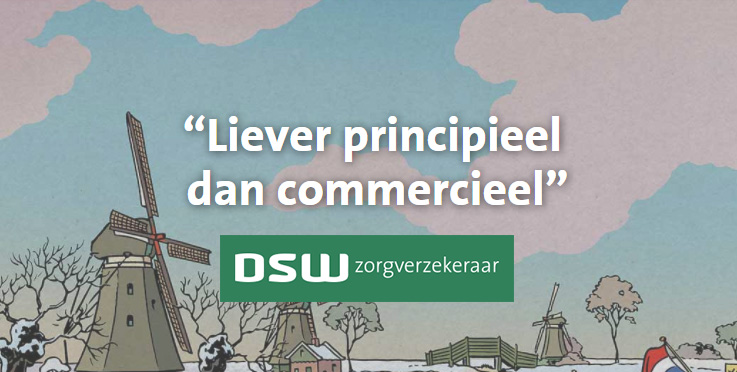Summaries per chapter with the 2nd edition of Developmental Neuropsychology: A Clinical Approach by Anderson et al. - Bundle
Study guide with Developmental Neuropsychology: A Clinical Approach by Anderson et al.
Study guide with Developmental Neuropsychology
Online summaries and study assistance with the 2nd edition of Developmental Neuropsychology by Anderson et al.
- For Booksummaries with Developmental Neuropsychology by Anderson et al. see Summaries with Developmental Neuropsychology
- For summaries with earlier editions of Developmental Neuropsychology by Anderson et al., see: Study guide with Developmental Neuropsychology: A Clinical Approach by Anderson et al.
Related content on joho.org
How is Developmental neuropsychology: A clinical approach structured? - Chapter 0
This updated version of Developmental Neuropsychology: A Clinical Approach addresses key issues in child neuropsychology. In doing so, the emphasis is not on current research issues. Instead, the focus is on evidence-informed clinical practice. Consequently, although research findings may be presented, the emphasis is on what is relevant for the (a) assessment, (b) treatment, and (c) management of paediatric conditions. The authors focus specifically on the following four areas:
- The natural history of the childhood central nervous system (CNS).
- Processes of (ab)normal cerebral and cognitive development; brain plasticity, and the impact of early CNS insult.
- A model that describes the complex interaction among biological, psychosocial, and cognitive factors in children that suffer from brain injury.
- The principles of evidence-based assessment, diagnosis, and intervention.
What is child neuropsychology and how has it developed over the past twenty years? - Chapter 1
Child neuropsychology, also known as paediatric neuropsychology, is the study of association between brain and behavior within the context of an immature, but rapidly developing, brain and the implementation of knowledge gained from that into clinical practice. The main focus of child psychology is to generate a developmentally informed knowledge base that facilitates optimal understanding of the impact of early brain injury on brain development and child function, which in turn can be used as guidance for designing evidence-based interventions to minimise disability.
Child neuropsychology takes its foundations from adult neuropsychology. Yet, whereas adult neuropsychology relates to a more static and tightly organised system, child neuropsychology related more to a dynamic path that can be characterized by plasticity, vulnerability, and critical periods. Consequently, adult-based models needed to be adapted to be relevant for implementation with infants, children, and adolescents. Nowadays, developmental perspectives have extended our knowledge base significantly, acknowledging the complex interplay of neurologic, cognitive, socio-emotional, and environmental factors important to child neuropsychology.
Which principle has played an important role in the early development of child neuropsychology?
The earliest contributions to child neuropsychology can be traced back to researchers such as Kennard (1936; 1940) and Teuber (1974), who gave descriptions of plasticity and recovery of function after childhood brain damage. These researchers documented relatively good recovery following early brain insult. This is also nicely covered in the Kennard principle: "If you're going to have brain damage, have it early". This early research offered an important contribution to the field, because, among others, they acknowledge the unique processes that may be acting in the developing brain following an injury or insult.
Later research added information about critical periods to the knowledge base, improving our understanding of the mechanisms at play following early brain insult. A critical period is defined by Mogford and Bishop (1993) as: "the time window during which external influences have a significant effect" (p. 252). It was found that early brain insult can have different effects at different times throughout development and, sometimes, may even be more destructive than later injury, because some aspects of cognitive development are critically dependent on the integrity of particular cerebral structures at specific stages of development.
Which two seminal models (developed in the late 1980s) had, and still have, a major influence on the field?
To date, only a handful of studies have attempted to formulate brain - behaviour paradigms of a truly developmental nature. There is basically no theoretical framework that successfully integrates biological, psychological, and environmental dimensions in a clinical meaningful way. It has even been argued that there has been little theoretical progress since two seminal models that have been developed in the late 1980s. These models are: (1) Non-verbal learning disability, developed by Byron Rourke in 1989, and; (2) Multidimensional age at insult; developed by Maureen Dennis (1989).
Model 1: Non-verbal learning disability (NVLD)
According to this model, non-verbal learning disability in children is characterized by:
- Bilateral tactile - perceptual deficits, more marked on the left side of the body.
- Impaired visual recognition and discrimination and visuospatial organisational deficiencies.
- Bilateral psychomotor coordination problems, more marked on the left side of the body.
- Difficulties managing novel information.
In addition, children with NVLD may also demonstrate intact skills, in particular within the auditory - verbal domain. These are listed as follows:
- Simple motor skills.
- Auditory perception.
- Rote learning.
- Selective and sustained attention for auditory - verbal information.
- Basic expressive and receptive language.
- Word reading and spelling.
This model offers an important contribution to the field, because it incorporates knowledge from the neuro dimension with the development of a specific cognitive development; the psych dimension. A key contribution if this model is the linkage between cognitive characteristics to an underlying neurologic explanation; the white matter hypothesis. The underlying assumption of this model is that normal development of white matter is essential for intact child development.
Model 2: Multidimensional age at insult
This 'heuristic' describes the impact of brain damage on language development.
Skill development can be divided into several levels:
- Emerging: the ability is in the early stages of acquisition, but is not yet functional.
- Developing: the ability is partially acquired, but not fully functional.
- Established: the ability is fully matured.
These developmental skills are integrated with three crucial age-related variables:
- Age at time of lesion; determines the nature of the cognitive dysfunction.
For example, early lesions are associated with a disrupted onset and rate of language development, whereas later lesions are associated wit a specific symptom pattern, such as high-level language dysfunction, for example impaired pragmatic skills. - Age at testing; early brain insults may cause relatively few problems early after the injury, yet children may "grow onto" deficits with ongoing development, as they fail to acquire age-expected skills.
- Time since insult; there are different performance patterns at different stages of recovery.
Which recently developed models play an important role in the field of neuropsychology?
Advances in the neurosciences have led to the development of theories that propose a complex relationship between risk factors. More specifically, it is argued that these risk factors interact and vary over time, determining functional outcomes after early brain insult. Within this framework, two familiar models are:
1. The cognitive reserve model (Dennis and colleagues, 2007):
- Mediating factor: children differ in their reserve capacity, which is composed by:
- Brain reserve capacity (BRC).
- Cognitive reserve capacity (CRC).
- Moderating factors:
- Age at the time of brain insult.
- Age at examination.
- Time elapsed since brain insult.
2. Recovery continuum model (Anderson and colleagues, 2011):
- According to this model, recovery is best understood by considering a continuum approach, whereby various potential risk and resilience factors interact to determine long-term outcome.
- Injury: severity, nature, complications.
- Cognitive skill: simple, complex.
- Development: age at injury, age at assessment.
- Environment: distal and proximal factors.
Another model that is well-established nowadays is the biopsychosocial model. According to this model, threats are numerous and span multiple domains:
- The bio dimension: brain (resilience and strengths; risks and weaknesses).
- The social dimension: environment (nurturing + stimulating; neglectful; abusive).
- The psych dimension: child cognitive and socio-emotional function (healthy functioning; internalising problems, such as anxiety, somatisation, depression, and psychosis; externalising problems, such as hyperactivity, impulsivity, and aggression).
To more comprehensively study the interacting influences of biology and environment, we need to built robust cross-discipline collaborations. The combined knowledge, in turn, can be translated into ' best' practice in the field to enhance optimal outcomes for children, as well as for the benefit of the community.
To conclude, a significant progression has represented itself over the past twenty years. Twenty years ago, understandings were primarily based on adult models of brain lesions. Today, developmental perspectives have extended our knowledge base significantly, acknowledging the interplay between neurologic, cognitive, socio-emotional, and environmental factors important to child neuropsychology. Yet, present models still fall short in explaining the complexities of interruption to a system in a rapid state of development. There still is an unacceptable high degree of unexplained variation in outcome following early brain injury. Future work therefore should focus on improving the prediction of outcome by measuring the interacting influences of parameters from these different domains and their ever-changing matrix throughout childhood.


















